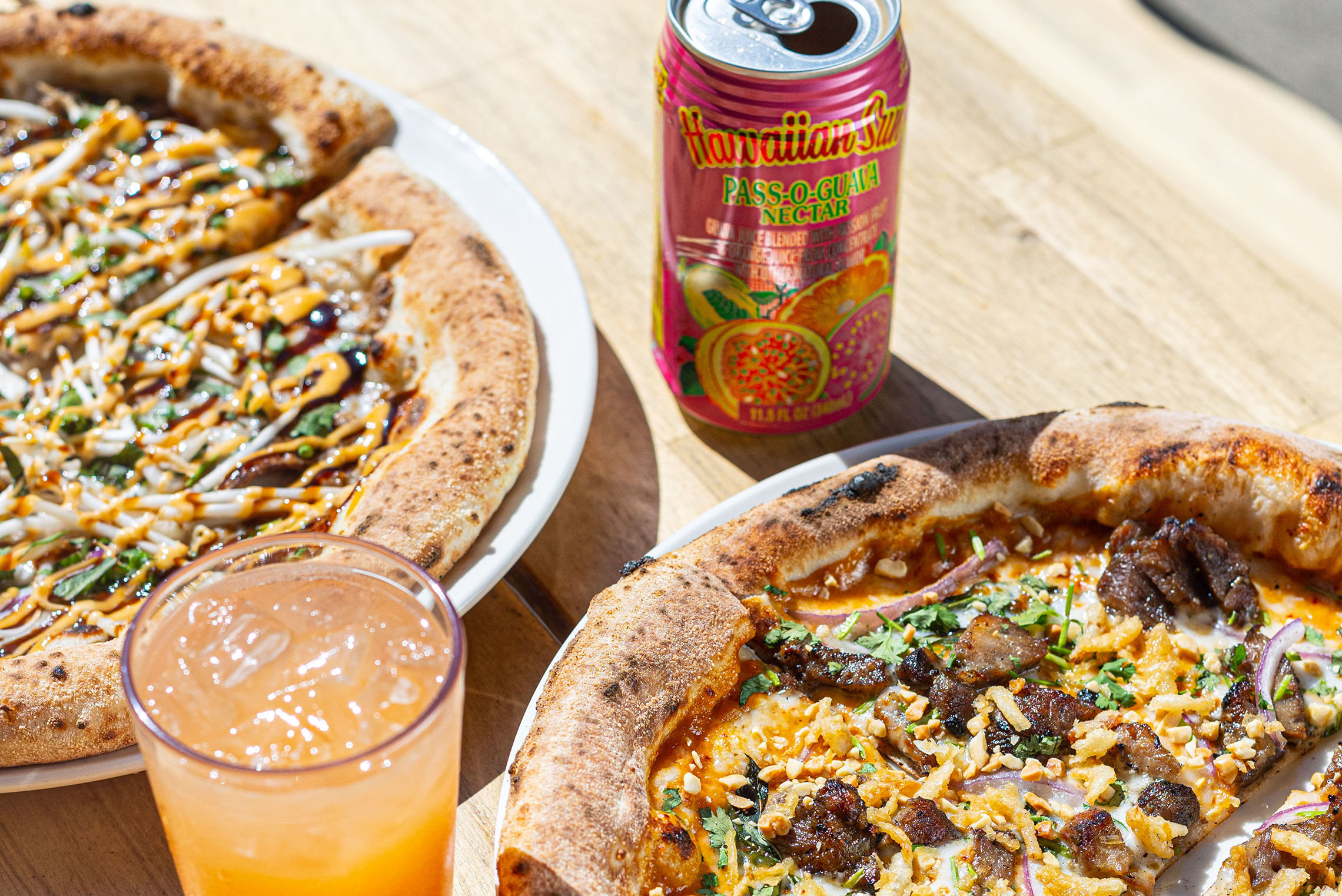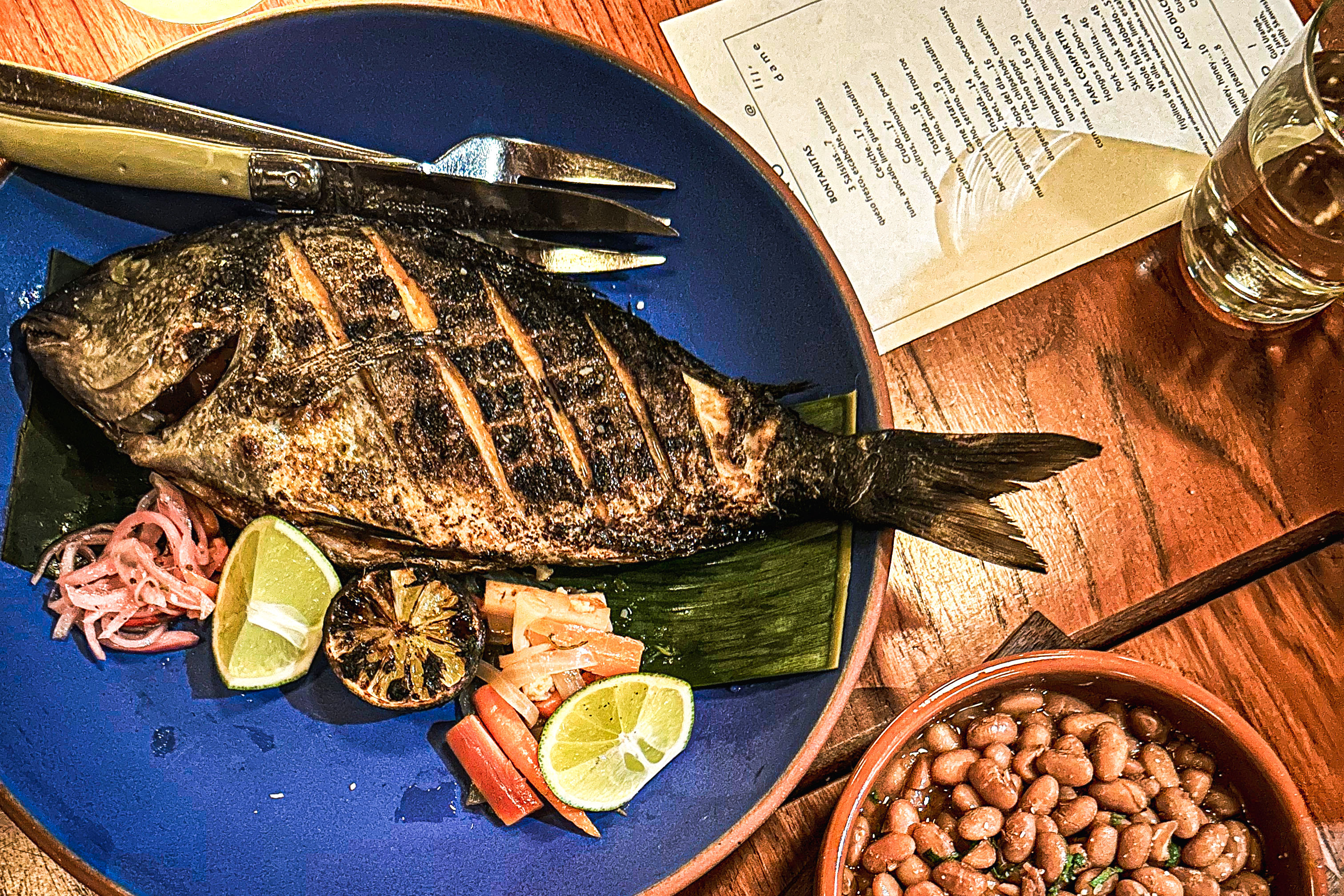
Best Restaurants 2009
For restaurants (and just about everything else), the past 12 months have been more challenging than any in decades. But here in Portland, 2009 might well be remembered as the greatest year yet for eating out.
Even as many high-profile eateries shuttered their doors, a new generation of foodie entrepreneurs showed us (along with the national and international press) that a memorable meal still can and should be savored in many places and ways: whether served in a boutique shopping district on candlelit, linen-topped tables or handed through a trailer window, wrapped in butcher paper snapped with a colorful rubber band.
Picking the 10 “best” restaurants from this rich stew seems somehow beside the point when menus change weekly—indeed, sometimes hourly—and food carts and sandwich shops casually compete (and even share chefs) with the city’s most refined eateries. So we took a different path, selecting 10 venues that best embody the diverse creativity at work, from the traditional downtown dining establishment to the coveted strip-mall find to the humble parking-lot food cart. We also scoured the metropolitan region for great meals to be found for $20 or less. And we discovered an unexplored dimension of Portland’s historic love for the Great Sandwich: an uncanny resemblance to Great Architecture. The result is a worthy sampling of eateries from a moment when, despite the toughest of economic droughts, Portland’s dining scene boldly blossomed.
New Chinatown

Rita Jia You brought home cooking, Sichuan style, to outer Southeast Portland’s burgeoning restaurant scene.
Image: Basil Childers
Lucky Strike
Forget beef with broccoli and General Tso’s chicken. As Portland emerges as America’s next great food city, every cuisine should share the stage, particularly the fiery, piquant cooking that is Chinese Sichuan. Enter Lucky Strike. It’s just one of a growing collection of worthy Asian restaurants sprouting in strip malls throughout the new Chinatown of outer Southeast. And this little seven-table gem delivers jolts to your taste buds that will revise everything you know about Chinese food.
Close contenders: Du Kuh Bee, Good Taste, Om Seafood
THE VISION
Owner Rita Jia You grew up in Sichuan Province and came to Portland when she was 18. Forlorn at the dearth of Sichuan offerings here, she decided to fix the problem herself. She enlisted boyfriend Stefan Leopold to cook, and together they opened a restaurant—neither of them with any formal culinary training (unless a degree in accounting qualifies). Most dishes are simply meals Jia grew up eating; others come from Leopold’s only experience working in a kitchen: helping out at Jia’s father’s factory cafeteria in China. “We combined knowledge—me knowing what it’s supposed to taste like, and him knowing some stuff he’d learned from the factory,” she says. “And then came Lucky Strike.”
THE FARE
Long nights spent figuring it all out have resulted in some transcendent dishes, like the not-to-be-missed Hot Pepper Chicken Bath: tiny cubes of chicken buried underneath a pile of dried Sichuan peppers. The spicy dan dan noodles with minced pork are cut with sesame paste to take some of that Sichuan edge off, and Mao’s infamous twice-cooked pork is given a local spin with a fine cut of pork belly mixed with tender Chinese chives. The cumin beef is not for the faint of heart, but it’s spectacular if you’re a seasoned devotee of this tangy spice. The dish, like most Sichuan dishes, contains prickly ash, a dried herb that, when you bite into it, sends your tongue on a tour of numbness, heat, and finally, a hint of strange, dry sweetness. —EH
The Performers
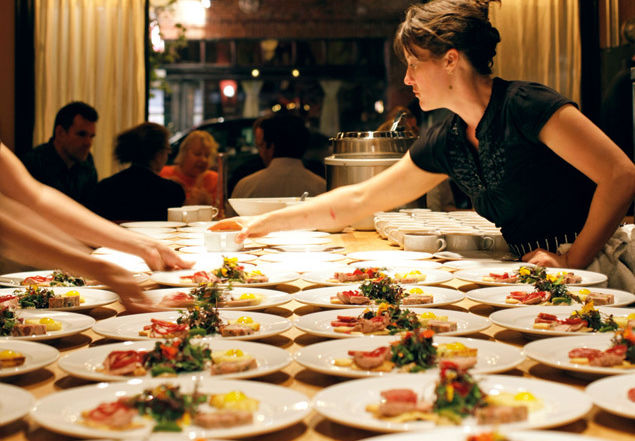
Chef Naomi Pomeroy builds the charcuterie plate.
Image: Basil Childers
Beast
Put aside the hustle and bustle of Portland’s other great restaurants and settle in for a few hours of watching Naomi Pomeroy and sous-chef Mika Paredes dance. Because that, as much as the food, is what you’ll experience at this 24-seat restaurant, notably the only top-end restaurant in the city choreographed, doorway to kitchen to tabletop, by a woman. The experience is resolutely Naomi, and expresses all that is intimate about Portland and all that is sensuous about its food.
Close contenders: None. Beast is in a class by itself.
THE VISION
“I wanted to have a platform for total self-expression,” Pomeroy says of Beast, the latest in her long line of culinary stints, which started with a high school job as the “burrito-rolling girl” at a Mexican place. Later, she cooked for and ran the beloved private dinners known as Family Supper and helped found the high-profile eateries Gotham Tavern and Clarklewis. In 2007, Pomeroy opened Beast, earning rave national reviews and the cover of Food and Wine. Her philosophy is simple. “I just wanted to use the best product and provide people with a very curated experience.”
THE FARE
The set menu—soup, charcuterie plate, entrée, salad, cheese, and dessert—changes weekly. Always anchored by meat, be it duck, lamb, pork, or veal, the menu might be inspired by anything from Pomeroy’s visits to France to her mood that day. The day we visited, in mid-September, Pomeroy was in Julia Child mode, concocting a cream of watercress soup from blanched and shocked watercress that she blended, tiny batch by tiny batch, into a water-based stock deepened with crème fraîche. To that, she added a paupiette—inspired by a version she saw in a French butcher shop—spun together from a veal leg, ground pork forcemeat, and prosciutto she cured from Tails & Trotters’ hazelnut-fed pork belly.
Meanwhile, Paredes spooned quail eggs onto toast for the steak tartare portion of the evening’s charcuterie plate and made a simple salted-caramel ganache tart accompanied by ice cream whipped up with a heart-stopping 12 yolks per quart. “It’s an easy and a hard process to explain,” Pomeroy says of menu construction, “because ultimately, it comes down to whim.” —EH
Casual Transcendence
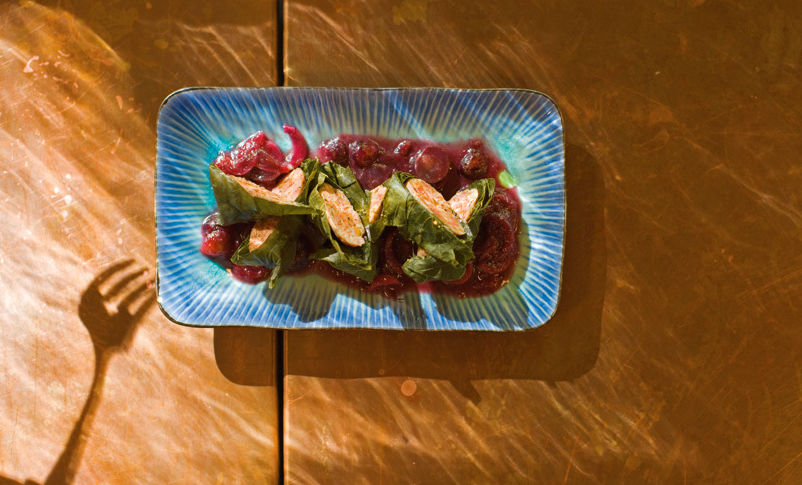
Duck and chanterelle dolmas with grape conserva.
Image: Basil Childers
Park Kitchen
The grueling marathon of nightly dining required to write a restaurant guide quickly teaches a critic that even in a city of countless well-executed meals, few stand out as truly unique and original. Park Kitchen routinely offers the exception. Founded by a chef who learned to tie his apron strings at some of Portland’s most influential restaurants, this six-year-old establishment was among the first of a new class of local eateries that ushered in the city’s finest era of dining. But unlike its peers, Park Kitchen hasn’t been content simply to produce exceptional Northwest fare. It revolutionizes the category.
Close contenders: DOC, Le Pigeon, Sel Gris
THE VISION
Executive chef and owner Scott Dolich established a pedigree at Pazzo, Zefiro, Higgins, and other restaurants before launching this North Park Blocks eatery in 2004. Chef de cuisine David Padberg joined him in 2005 after serving a stint as the original sous-chef at the acclaimed Clarklewis and cofounding the Axis Supper Club. Together, Dolich and Padberg combine seasonal, yet often disparate, ingredients into blissful, rambunctious medleys that leave you with a strong desire to lick your plate. And with its homey lime-green walls and earthy mismatched tableware, this is the sort of unpretentious spot where plate-licking might be perfectly acceptable, so long as you did it with confidence.
THE FARE
Entrées can be outstanding, but Park Kitchen’s menu is best enjoyed by ordering a variety of small sharable plates, divided into “hot” and “cold.” A chilled beet soup brightened with tart yogurt and Dijon mustard is anointed with oxtail confit, a far tastier garnish than parsley. Diminutive, moan-inducing French crêpes stuffed with duck confit rest atop a savory yet slightly tart sauce of basil and roasted peaches. And for a more memorable take on Belgian fries, try the tempura-fried green beans and spears of salty bacon, served in a paper cone.
While dipping deep-fried bacon into tarragon-spiked aioli may seem like high-risk behavior, skipping dessert—the world’s lightest-ever olive-oil cake topped with seasonal fruit, for instance—is by far more perilous. And you could take a healthier route to the dessert tray. No Portland restaurant so honors vegetables like Park Kitchen—try the braised celery hearts served over a rich, paprika-spiked bath of pocha beans and Oregon chanterelle mushrooms. —MT
Far East on the West Side
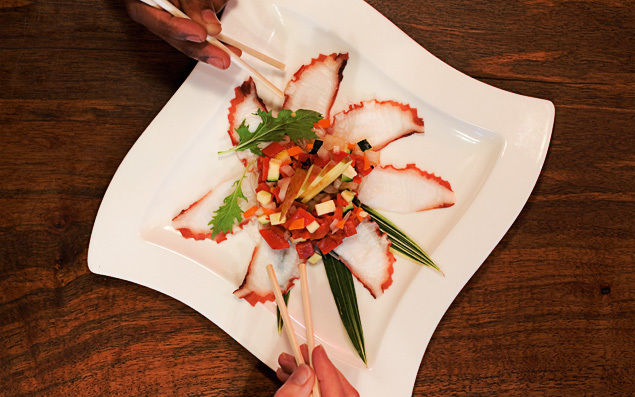
Tako (octopus) sashimi.
Image: Basil Childers
Syun Izakaya
Forget what you think you might like about a sushi place. Throw out sustainability, a hip soundtrack, a dark room, saketinis, and gigantic ice buddhas. Instead, think about fish—what kind you want and how perfectly prepared you want it to be. Don’t be shy about leaving Portland and braving a 55-minute MAX ride (or, if you must, a 20-minute drive) to downtown Hillsboro. Steps from the train’s last stop, in, of all places, the basement of the old Hillsboro Public Library, is the 11-year-old Syun Izakaya. It’s bright; it’s weird; it has a plastic clock shaped like a piece of sushi. And it serves the best Japanese food we’ve tasted.
Close contenders: Bamboo Sushi, Biwa, Yuzu
THE VISION
Chiba native Kunihiko Imai, a former All Nippon Airways employee armed with a Japanese chef’s license, and his wife, Susako, started Syun as an experiment. They wanted to create a local version of the popular Japanese-style pub called izakaya, featuring a short menu of cooked dishes augmented with raw fish. It was an instant hit, packed first with the Silicon Forest’s Japanese techies and then more Americans as companies like Toshiba left. The couple returns home twice a year to stay current and push the menu in experimental directions—for instance, deep-fried tofu or green-tea pudding.
THE FARE
Don’t shy away from the stranger dishes. The octopus and cucumber in vinegar is a study in texture and tone, the chewy darkness of the animal punched up by the crisp almost-pickles. Yellowtail cheek, splayed open and grilled, offers up the flakiest, fattiest part of the fish. (The few bones will remind you of how recently your food was swimming.) Less adventurous eaters might opt for the cold soba—delicate and delicious (and a bit slippery when dunked in the soy dipping broth). But everyone should order the toro, the most perfect bite of the ocean you can experience without growing a set of gills. —EH
The Maximalists
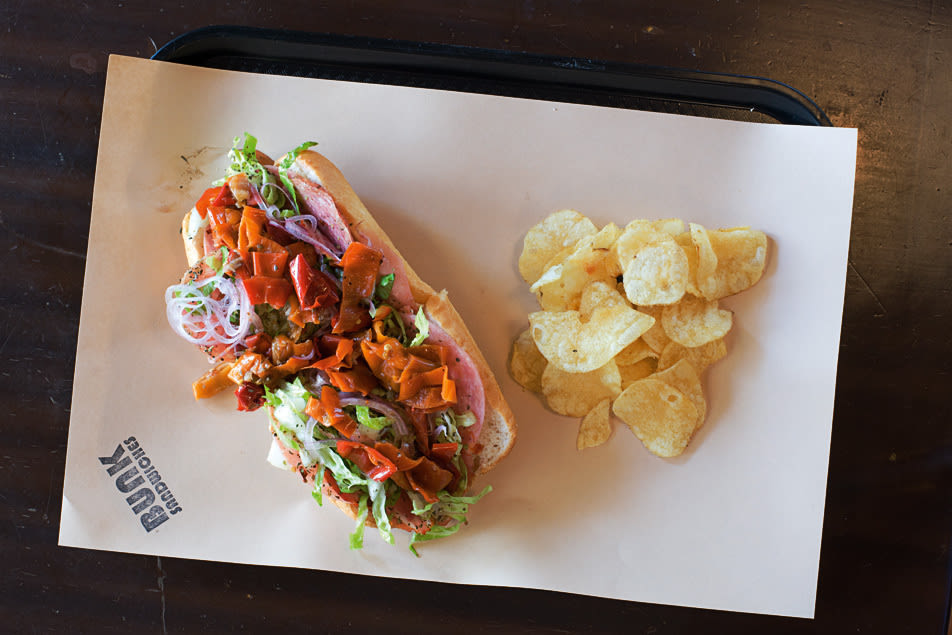
The Italian cured meats sandwich with a side of potato chips.
Image: Basil Childers
Bunk Sandwiches
Walk down SE Morrison Street at midday and, at Sixth Avenue, you’ll find yourself amid a motley crew of tattooed hipsters, moms wearing fanny packs, burly and besuited office workers, and tiny creative sprites, each anxiously anticipating lunch—a Bunk sandwich. As the times continue to demand living well on less, Portland is experiencing a kind of sandwich renaissance (Kenny & Zuke’s, Meat Cheese Bread, and Addy’s Sandwich Bar). But with its casual, free-flowing virtuosity, Bunk is surely our Titian.
Close contenders: Eastmoreland Market, Meat Cheese Bread, Petisco
THE VISION
Co-owners Nick Wood and Tommy Habetz met while working the line at Meriwether’s, but Bunk reaches deep into both chefs’ pasts. The flavor profiles are drawn from those Habetz loved while working at Mario Batali’s Po in New York and those Wood embraced at Terrance Brennan’s eponymous New Orleans eatery, Brennan’s Restaurant. Wood calls their collaboration “a soulful, kind of rustic, flavorful thing.” Originally, the two wanted to open up a Roman-inspired trattoria, but an old habit of making sandwiches with whatever they’d found lying around Meriwether’s kitchen became their career. “Portland’s about small chef-owned and -operated places,” Wood says. “That’s what we are. But we don’t call ourselves chefs anymore.”
THE FARE
Staunchly locally sourced, the menu includes a meatball Parmigiano that could be airlifted from the East Coast (if it weren’t for the superior Carlton Farms pork) and tuna salad that’s made from Oregon albacore. The perfectly rendered roasted Draper chicken salad—made with chicken lovingly rubbed in bacon fat while it’s roasted, avocado, and Daily’s bacon imported from Montana—gets extra TLC from a tarragon mayonnaise. Almost everything except the bread (which comes from such different sources as Fleur de Lis in Northeast and the Vietnamese An Xuyen Bakery on SE Foster Road) is cooked, cured, and made at the store. That’s why, despite those long lines of hungry patrons, the proprietors will never extend their hours. And so we wait patiently, salivating over our chance to savor the culinary experiments this duo carries out between two slices of bread. —EH
Communal Value
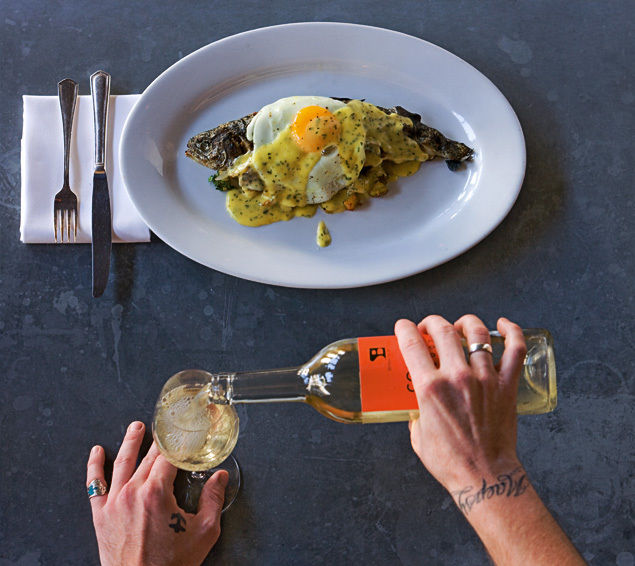
Grilled trout with smoked beef tongue, potato hash, and a fried egg with béarnaise sauce.
Image: Basil Childers
Clyde Common
Clyde Common offers a warm antidote to the era of Twitter and Gmail: the pure joy of the face-to-face encounter. Oh, there’s also spectacular food. At this bright, open restaurant, your order may very well be based on the recommendation of a new friend from across the table. And whatever you choose—the pimento-dusted popcorn, perhaps, or the chicken-fried chicken livers—could become a favorite. Other restaurants may have imposed communal tables on their clientele, but only Clyde understands the careful calibration of space, service, and voyeurism that allows diners to feel cozy while eating with strangers.
Close contenders: Beaker & Flask, Toro Bravo
THE VISION
This is a place of happy accidents, and its provenance is no different. Upon arriving in Portland in 2004, chef Jason Barwikowski earned his locavore stripes at Paley’s Place, sharing the line with Gabriel Rucker (now of Le Pigeon) and Ben Bettinger (now of Beaker & Flask). He left to start the ambitiously offbeat Gotham Tavern, where he worked with Beast’s Naomi Pomeroy. He then met Nate Tilden and Matt Piacentini, and together they opened Clyde Common: Domestic and Foreign Cooking. The restaurant’s Spanish, Italian, and Moroccan flavor profiles typically adhere to a short list of favored notes that Barwikowski simply calls “earthy, fishy, salty, heady.”
THE FARE
The tagliarini with crab—a dish inspired by Chez Panisse’s Paul Bertolli—is a study in salty and sweet, the freshly made pasta combining with bright lemon juice, pickled Calabrian chiles, and scallions for a treble-note counterpoint to the savory Dungeness crab. Grilled trout comes with a smoked beef tongue and Nicola potato hash, made even more decadent by a sunny side up egg and a béarnaise sauce. Barwikowsi is particularly adept with lamb: skewered and grilled, its smoky sweetness is offset by salty ricotta salata, buttery shell beans, and a crisp salsa verde. Chase it with one of pastry chef Danielle Pruett’s desserts. The caramel-tomato tarte tatin is an entirely unprecious rethinking of a pastry staple. It’s good enough to steal from your neighbor, although you could probably just as well ask. —EH
The Regionalist
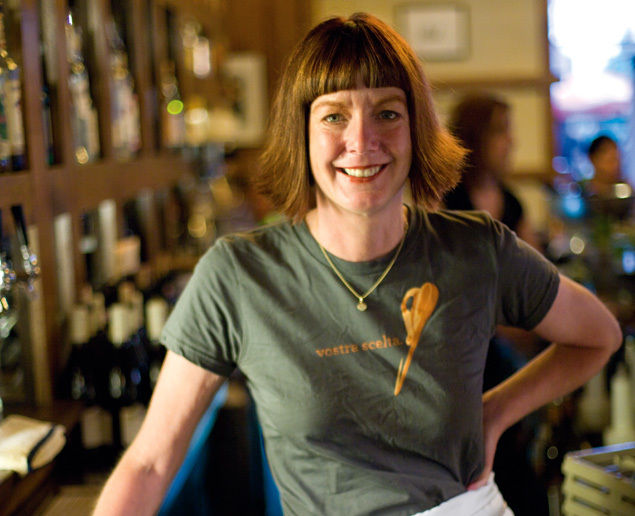
Chef Cathy Whims.
Image: Basil Childers
Nostrana
There are restaurants by which to judge other restaurants, and there are those by which to judge friends. Such is Nostrana. With fare so humble, so religiously seasonal, so artfully executed, so authentically regional (in the sublimely specific northern Italian sense), it’s not too harsh to say that if a friend doesn’t comprehend the magic of this restaurant, he or she may not be worthy of your time—at least during the dinner hour.
Close contenders: Bar Mingo, Navarre, Ned Ludd
THE VISION
Authenticity is no accident. Chef Cathy Whims has studied with Madeleine Kamman and Marcella Hazan, two of the most renowned living teachers of the culinary arts, and she has traveled to Italy many times to master regional techniques. She was the executive chef and co-owner of what was arguably Portland’s most influential restaurant, Genoa. But in contrast to Genoa’s spendy, multicourse menu, Nostrana’s only entrée that tops $20 is the Bistecca alla Fiorentina, a massive grilled Porterhouse steak that easily feeds three. Given that Whims was a 2009 James Beard Award finalist in the Best Chef: Northwest category, there’s not another restaurant in Portland that delivers such value.
THE FARE
Whims rarely leaves you wondering what ingredients comprise a dish. Flavors scream, exemplifying both mastery and a humble restraint. A seared flat-iron steak, its internal flesh the color of a pomegranate, rests atop a bed of fresh arugula garnished with soft slivers of poached garlic and rosemary-infused olive oil. Seasonal pasta dishes, like the summer lasagna, are fresh and unfettered: sheets of soft spinach pasta alternate with sliced sweet heirloom tomatoes, homemade mozzarella, and small explosions of flavor in the form of prosciutto pieces scattered throughout. —MT
Creative Class
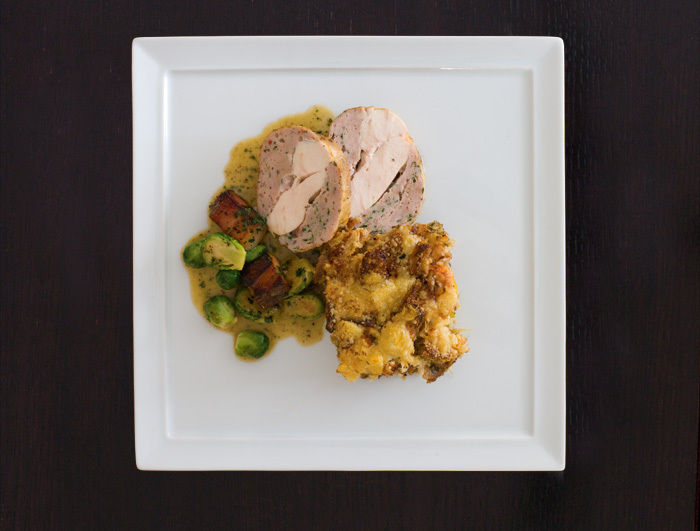
Chicken roulade with savory bread pudding and a sauté of bacon and brussels sprouts with crême fraîche.
Image: Basil Childers
Paley’s Place
Long before food became Portland’s proxy for emotion and an outlet for its unstoppable creative drive, Vitaly and Kimberly Paley opened Paley’s Place. For 14 years since, it has remained at the zenith of Portland restaurants because of Vitaly’s mad creativity (testa rossa—pig head—à la Cryovac, anyone?) and the couple’s resolve to imbue each experiment with the joy and precision of a flawless opening-night performance. Back full time after publishing The Paley’s Place Cookbook, the chef is running on an all-time high.
Close contenders: Carlyle, Higgins
THE VISION
After early careers as, respectively, a dancer and a concert pianist, Kimberley and Vitaly Paley met while working for World Yacht Cruises. They did their time at New York eateries like Union Square Café and Chanterelle (him), Alison on Dominick’s and Bouley (her), and Moulin de la Gorce in Limoges, France (together). Inspired by Oregon’s wine scene, they moved to Portland in 1995. Not knowing a soul in the restaurant biz, they opted to build their network at the source—local farms—“without it being the hip thing that it is now,” Kimberly says. When asked about his inspirations, Vitaly says, “Sometimes it’s an ingredient, sometimes a preparation, sometimes a memory of something that I’ve seen.”
THE FARE
The food is whimsical, earthy, and decadent. Consider one simple meal: a romaine salad, charcuterie, ravioli, pork shoulder with polenta. The salad is drenched in a steak-house favorite—ranch dressing—made with oven-dried vegetable chips, buttermilk, aioli, sour cream, and cider vinegar. The charcuterie is that testa rossa slow-cooked in vacuum-sealed plastic (a technique known as sous vide), and the ravioli, made using only the yolks of duck eggs, is filled with spiced rabbit and fennel pollen. Grilled rather than braised, the pork shoulder sits atop polenta mashed from fresh grated corn. End your meal with chocolate soufflé cake served with toasted hazelnuts and honey-vanilla ice cream. —EH
The Beastie Boys
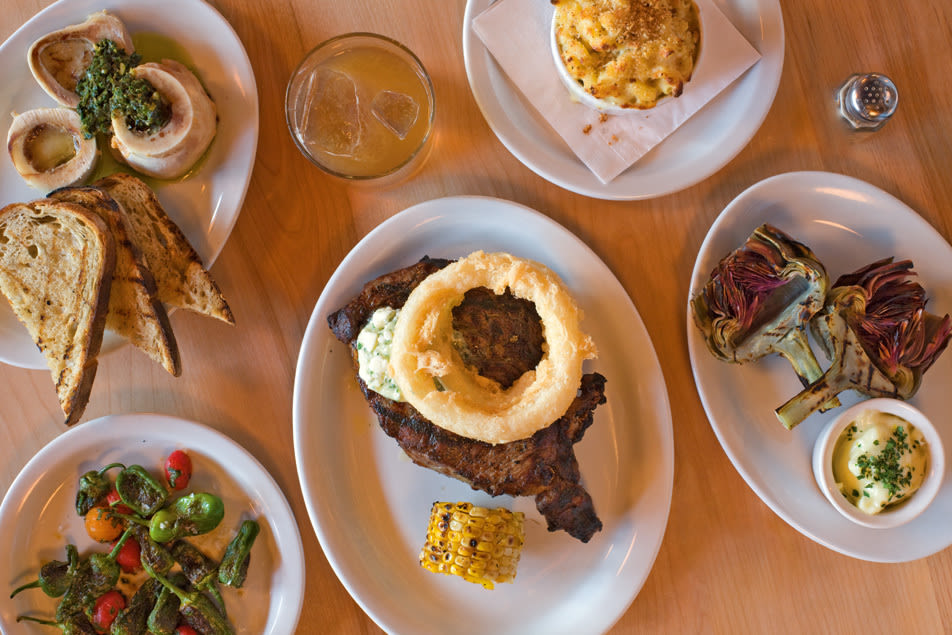
Clockwise from top left: Seared padrón peppers; marrow bone; mac and cheese, grilled artichokes; grilled rib eye.
Image: Basil Childers
Laurelhurst Market
Portland is a city of carnophiles. And as the weekend crowds attest, Laurelhurst Market is their new shrine—equal parts American brasserie, butcher counter, lunchtime sandwich shop, and neighborhood diner. The menu boasts enough price points to make dining a joy for both prince and pauper. There’s even a vegetable or two. Unlike its wallet-wringing West Side steak-house peers, Laurelhurst asks $20 or less for many of its entrées. It’s a steak house for the rest of us—and our favorite new restaurant of 2009.
Close contender: Nel Centro
THE VISION
Few restaurants so beautifully exemplify Portland’s current jam-session creativity as this new eatery. It was conceived by Jason Owens, Ben Dyer, and David Kreifels, the trio behind the Southeast private dining hall Simpatica and former carnivore market Viande Meats & Sausage. With their combined experience at such seminal Northwest restaurants as Tuscany Grill, Paley’s Place, and Axis Supper Club, it would be tough to find a team of restaurateurs with such rich backgrounds and diversity of cooking styles.
THE FARE
There’s the simple: an excellent grilled Reuben stacked wrist-thick with house-made corned beef and sauerkraut, accompanied by a pile of crispy fries. The sophisticated: steak frites pan-seared and bathed in a buttery wine sauce. And the decadent: a big-enough-for-two grilled rib eye finished with blue cheese butter and capped with fried Walla Walla sweet onions, thinly sliced. Then there are the sides: excellent cod croquettes with aioli; steak tartare (sans the overpowering capers ubiquitous to raw beef on toast); and bright red piquillo peppers stuffed with a brandade, a lovely purée of potatoes, garlic, cream, and salt-cured fish—halibut instead of the usual cod. —MT
Food Cart-ography
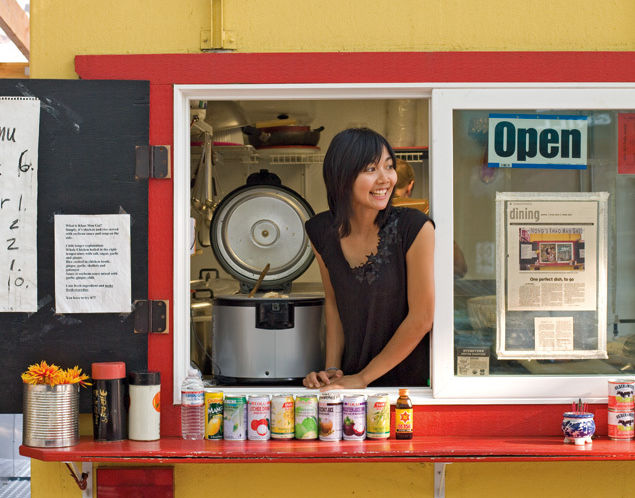
Nong Poonsukwattana’s colorful cart on SW Alder Street.
Image: Basil Childers
Nong’s Khao Man Gai
Portland’s thriving food-cart scene had to be covered in the New York Times and the glossy pages of GQ and Details magazine to earn the respect of Portland’s food fashionistas. Nong’s Khao Man Gai needed only to dish up chicken and rice—the best you’ve ever had. Portland is now home to around 400 food carts serving dishes from the everyday (see Andrea Spella’s excellent espresso) to the outrageous (see smoked-salmon ice cream at Junior Ambassador’s). But while many boast menus as expansive as their brick-and-mortar counterparts’, Nong’s tops our roster of food carts for proving that God, plus a sexy brand of confidence, can exist in one dish.
Close contenders: Koi Fusion, Tábor
THE VISION
Nong Poonsukwattana began her foray into cooking at age 5, in her hometown of Bangkok. There, she helped her mother pound ingredients into curry pastes with a mortar and pestle and learned to make fresh coconut milk. She took her first restaurant job at age 14, and has worked in Portland restaurants (most recently at Pok Pok) since arriving here in 2003.
THE FARE
Nong’s is a one-pot wonder. It serves only khao man gai: slices of juicy chicken poached in a secret blend of herbs and placed atop a pile of white rice simmered in both the chicken’s juices and a garlic- and ginger-spiked soybean chile sauce so unforgettable that Nong could take early retirement if she started selling it by the jar. The combo is artfully packaged in white butcher paper, bound by a colored rubber band, and topped with a paper cup of refreshing winter squash soup. Add a dollar to the $6 Poonsukwattana charges, and she’ll throw in some chicken livers. If she can make such magic with a single dish, one wonders what she could do with a full menu. —MT
